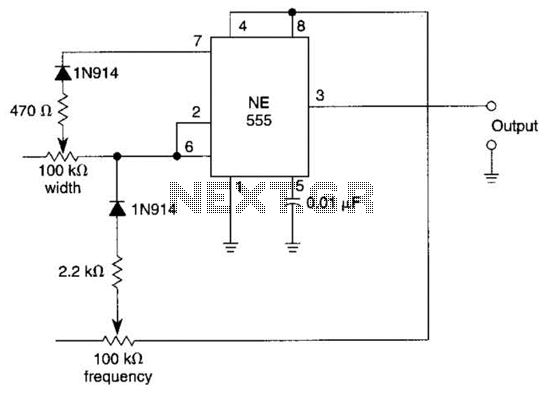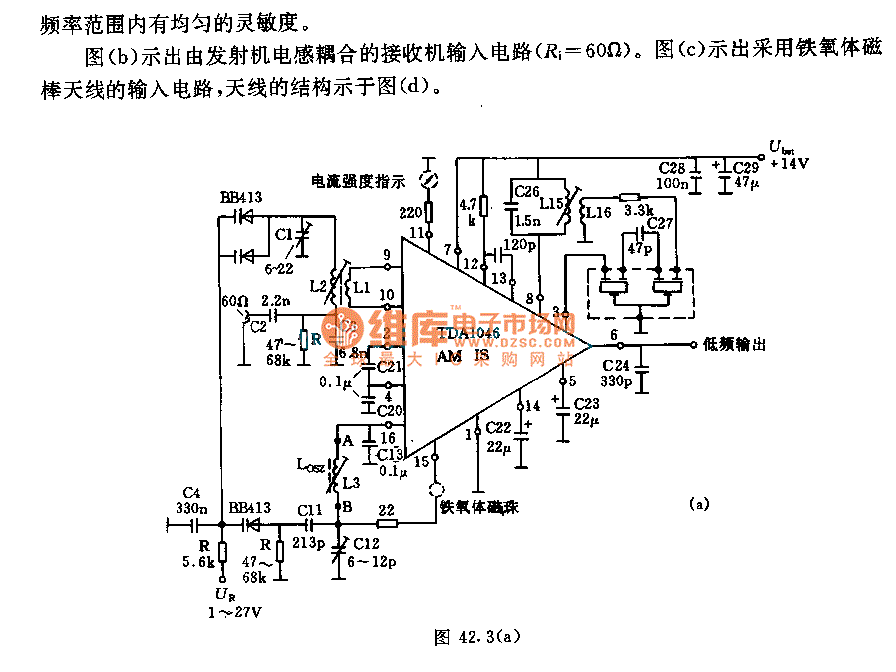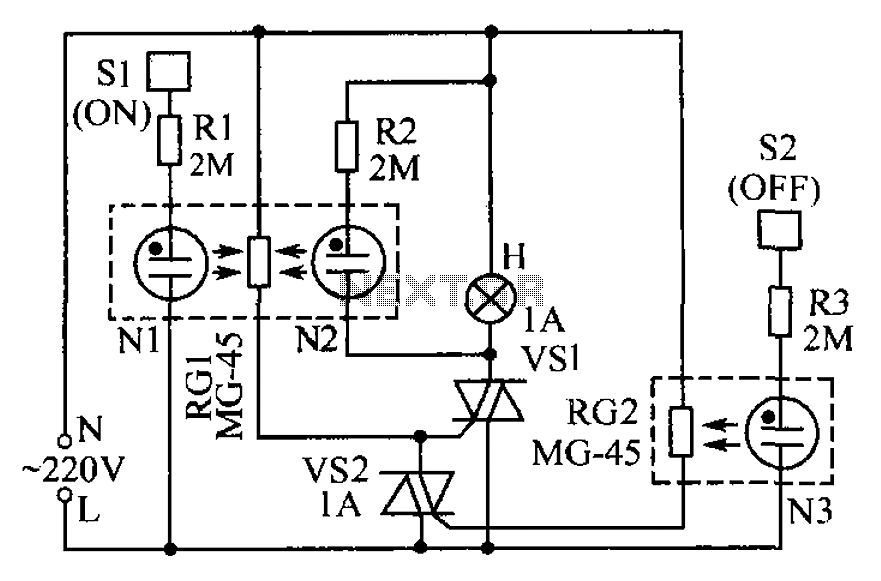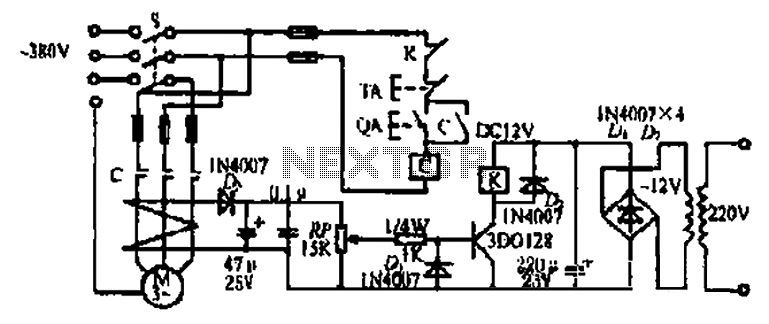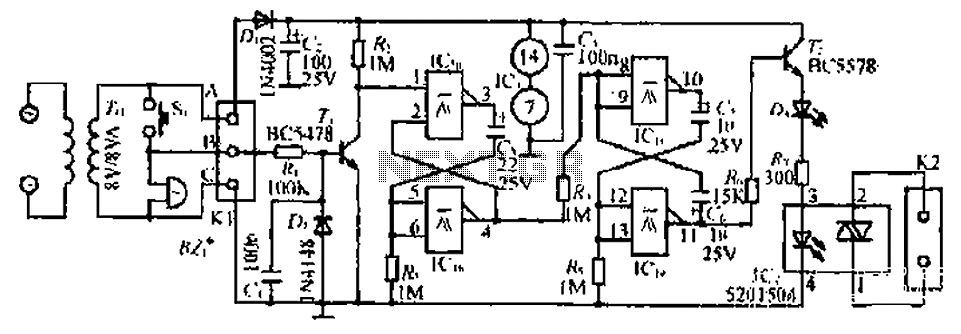
Add-On Pulse Generator Circuit
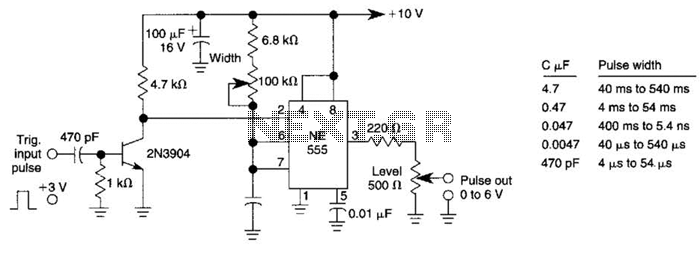
This pulse generator can enhance a standalone pulse generator. By utilizing a transistor and a 555 timer, it can produce pulse widths ranging from 5 microseconds to 500 microseconds. The value of capacitor C3 can be approximately determined using the formula: C3 (in microfarads) = 1.1 x 10^-5 T, where T represents the shortest desired pulse width (in microseconds) within a 10:1 range (T must be greater than 5 microseconds). Additionally, the capacitor values and the corresponding pulse width range are provided.
The pulse generator circuit employs a 555 timer configured in monostable mode, which is capable of generating a single pulse of a specified duration in response to a trigger signal. The duration of the pulse is primarily determined by the resistor and capacitor values connected to the timer. In this case, the timing capacitor C3 plays a crucial role in establishing the pulse width, which can be adjusted based on the desired application.
The transistor serves as a switch to control the output signal, allowing for higher current or voltage levels than what the 555 timer alone could provide. This configuration is particularly useful in applications where the pulse needs to drive a load that requires more power than the timer can handle directly.
To calculate the appropriate capacitor value for C3, the formula provided can be manipulated to find the necessary capacitance for a given pulse width. For instance, if a pulse width of 10 microseconds is desired, substituting T = 10 into the formula yields C3 = 1.1 x 10^-5 x 10, resulting in a capacitance of approximately 0.11 microfarads. This method allows for precise control over the output pulse characteristics.
The circuit design should also include adequate decoupling capacitors to stabilize the power supply to the 555 timer and ensure reliable operation. Additional components, such as diodes, may be integrated to protect against back EMF if the output is connected to inductive loads.
Overall, this pulse generator circuit is versatile and can be tailored to meet specific requirements by adjusting the values of the timing components, making it suitable for a wide range of applications in electronic projects. This pulse generator can supplement a standalone pulse generator. Using a transistor and a 555 timer, pulse widths of 5 to 500 can be produced. The value of C3 is approximately found from the formula: C3 uF = 1.1 x10-5 T where T is the shortest pulse width (uS) desired in a 10:1 range (T should be greater than 5uS). The capacitor values and consequent pulse width range are shown. 🔗 External reference
The pulse generator circuit employs a 555 timer configured in monostable mode, which is capable of generating a single pulse of a specified duration in response to a trigger signal. The duration of the pulse is primarily determined by the resistor and capacitor values connected to the timer. In this case, the timing capacitor C3 plays a crucial role in establishing the pulse width, which can be adjusted based on the desired application.
The transistor serves as a switch to control the output signal, allowing for higher current or voltage levels than what the 555 timer alone could provide. This configuration is particularly useful in applications where the pulse needs to drive a load that requires more power than the timer can handle directly.
To calculate the appropriate capacitor value for C3, the formula provided can be manipulated to find the necessary capacitance for a given pulse width. For instance, if a pulse width of 10 microseconds is desired, substituting T = 10 into the formula yields C3 = 1.1 x 10^-5 x 10, resulting in a capacitance of approximately 0.11 microfarads. This method allows for precise control over the output pulse characteristics.
The circuit design should also include adequate decoupling capacitors to stabilize the power supply to the 555 timer and ensure reliable operation. Additional components, such as diodes, may be integrated to protect against back EMF if the output is connected to inductive loads.
Overall, this pulse generator circuit is versatile and can be tailored to meet specific requirements by adjusting the values of the timing components, making it suitable for a wide range of applications in electronic projects. This pulse generator can supplement a standalone pulse generator. Using a transistor and a 555 timer, pulse widths of 5 to 500 can be produced. The value of C3 is approximately found from the formula: C3 uF = 1.1 x10-5 T where T is the shortest pulse width (uS) desired in a 10:1 range (T should be greater than 5uS). The capacitor values and consequent pulse width range are shown. 🔗 External reference
